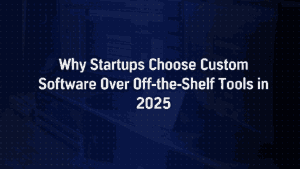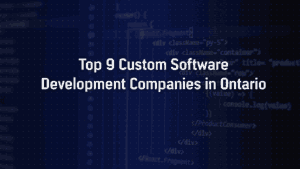How to Create a Strong Brand Positioning Framework for 2025
Did you know that by 2025, the global artificial intelligence (AI) market is projected to exceed $390 billion? As AI continues to permeate various industries, it’s reshaping how businesses approach their brand positioning framework. Traditional methods are being challenged by AI’s ability to generate content, analyze consumer behavior, and predict market trends. In fact, 83% of companies have identified AI as a top priority in their business strategies.
Consumer expectations are also shifting rapidly. A recent survey revealed that 84% of consumers search for brands on social media before making a purchase, and 67% have completed transactions through these platforms. This highlights the growing importance of a well-defined market positioning strategy that effectively leverages digital channels.
Moreover, brand loyalty is on the decline, with a projected 25% decrease by 2025. This trend underscores the necessity for businesses to conduct thorough competitive brand analysis to differentiate themselves and retain customers.
With AI-generated content becoming more prevalent and consumer behaviors evolving, how can your brand stand out and maintain a competitive edge? This guide will provide actionable insights and strategies to help you navigate the complexities of modern brand positioning.
Why Brand Positioning Needs a Fresh Perspective in 2025

By 2025, brand positioning will require a more sophisticated approach than ever before. Brands that fail to adapt will lose relevance in a market dominated by AI-generated content and shifting consumer preferences. Market positioning strategy can no longer rely on keyword optimization or surface-level differentiation. It demands a deeper understanding of trends, sentiment, and micro-audience behavior.
The Collapse of Traditional Positioning
Google’s Search Generative Experience (SGE) is reshaping how information is presented online. Instead of static search results, users receive AI-curated responses that synthesize data from multiple sources. This means brands can no longer dominate search results simply by ranking for keywords. If your brand positioning framework doesn’t account for AI-driven content, your visibility may plummet.
Similarly, TikTok’s algorithm rewards content based on real-time engagement and behavioral analysis. Traditional content strategies focusing on polished brand narratives now fall flat. To stay ahead, brands must refine their market positioning strategy by producing content that feels authentic, dynamic, and community-driven.
The Rise of “Anti-Brand” Consumers
Gen Z and younger millennial consumers are skeptical of over-polished brand messaging. They crave raw, authentic interactions that align with their values. According to recent data, 75% of Gen Z consumers prefer brands that openly admit mistakes and address them transparently. This shift pushes brands to focus less on controlling their narrative and more on building trust through genuine, unfiltered communication.
Failing to adapt means risking alienation from a consumer base that values honesty over perfection. Integrating competitive brand analysis into your strategy allows you to identify where competitors fall short and fill the authenticity gap that modern consumers demand.
AI’s Role in Redefining Competition
AI is advancing beyond content generation, now mimicking brand messaging and diluting competitive advantages. Tools like ChatGPT-5 can craft competitor-specific messaging clones that diminish brand differentiation. Brands that rely on static, pre-defined positioning will struggle to maintain uniqueness.
To outsmart AI-generated competition, brands need to incorporate dynamic repositioning tactics and leverage predictive analytics. This approach ensures that the brand positioning framework remains agile and adaptable to evolving market conditions.
Without a strategy that blends authenticity, agility, and AI readiness, brands risk becoming obsolete. In 2025, staying competitive means reinventing your brand positioning game plan.
7 Steps to Build Your 2025 Brand Positioning Framework

To secure a competitive edge in 2025, brands need a strategy that blends data-driven insights with adaptive positioning. This 7-step brand positioning framework leverages emerging technologies, cultural intelligence, and audience sentiment to help brands stay ahead.
1. Conduct a “Dark Social” Competitive Analysis
Dark social platforms like Reddit, Discord, and niche community forums house unfiltered discussions where consumers express real concerns and desires. These platforms offer valuable insights into consumer sentiment that conventional analytics tools miss. Conducting a competitive brand analysis on these channels helps uncover gaps that competitors fail to address.
Key Actions:
-
- Analyze discussions in niche subreddits to identify unmet consumer needs.
- Monitor private group conversations for insights into competitor weaknesses.
- Use sentiment analysis to map consumer perception in dark social channels.
- Incorporate findings into the brand positioning framework to craft a stronger, more resonant narrative.
2. Map “Emotional Profit Zones”
Emotions drive purchasing decisions, and identifying emotional touchpoints can unlock high-margin opportunities. Leveraging AI-driven positioning tools combined with sales data allows brands to pinpoint emotional branding triggers that lead to profitable conversions. Whether it’s a sense of belonging or trust, mapping these zones enhances the effectiveness of your market positioning strategy.
Key Actions:
-
- Utilize sentiment mining tools to analyze emotional responses across digital channels.
- Correlate emotional triggers with high-value conversions to map profit zones.
- Refine value proposition design to align with emotionally charged touchpoints.
- Integrate emotional insights into the brand positioning framework for increased resonance.
3. Engineer a Cultural Chameleon Strategy
Adapting brand narratives for different micro-audiences is no longer optional. Crafting a market positioning strategy that resonates with diverse segments ensures cultural relevance frameworks align with audience expectations. Tailoring messaging for distinct audiences—such as eco-conscious millennials or urban Gen Z gamers—helps build emotional loyalty and trust.
Key Actions:
-
- Segment audiences based on brand archetype alignment and psychographics.
- Develop customized messaging aligned with each segment’s values and interests.
- Test and refine localized content for maximum relevance and consistency.
- Ensure omnichannel consistency while maintaining core brand identity.
4. Create a Crisis-Agile Positioning Matrix
Unpredictable market disruptions require a brand positioning framework that can rotate swiftly. Developing a crisis-agile positioning matrix prepares brands to shift narratives during PR crises or sudden geopolitical events. This proactive approach safeguards brand reputation by enabling rapid response.
Key Actions:
-
- Pre-draft multiple positioning roots to address potential crisis scenarios.
- Train internal teams to activate crisis-ready communication frameworks.
- Build a real-time threat radar that monitors emerging challenges.
- Integrate crisis strategies into the competitive brand analysis matrix.
5. Integrate Predictive Trend Scenarios
Staying ahead of evolving market dynamics requires integrating predictive trend analysis into the brand positioning framework. AI-powered tools such as Brandwatch and Talkwalker forecast upcoming shifts in consumer perception mapping, allowing brands to pre-emptively adjust their messaging.
Key Actions:
-
- Use AI-driven positioning tools to identify emerging consumer trends.
- Develop positioning scenarios that align with future market positioning strategy needs.
- Monitor competitive behavior to anticipate gaps in the market.
- Update value proposition design quarterly to stay aligned with shifting trends.
6. Build a “Neurobranding” Feedback Loop
Consumer decisions are often influenced by subconscious responses, which traditional surveys and focus groups rarely capture. Incorporating neuromarketing techniques such as EEG and eye-tracking provides real-time insights into emotional branding triggers. These insights refine the brand positioning framework to optimize audience resonance.
Key Actions:
-
- Conduct EEG and eye-tracking studies to capture subconscious audience reactions.
- Analyze biometric data to refine brand differentiation tactics.
- Iterate brand visuals and messaging based on feedback from subconscious responses.
- Integrate findings into the competitive brand analysis to enhance emotional alignment.
7. Launch a “Beta Brand” Sandbox
Testing experimental brand positioning strategies in decentralized environments reduces risk while refining strategies before large-scale deployment. Web3 communities and DAO platforms offer ideal testing grounds where brands can gather real-time feedback to iterate and optimize the brand positioning framework.
Key Actions:
-
- Develop beta versions of messaging or product positioning tailored for micro-communities.
- Launch pilot positioning initiatives in Web3 spaces to gather decentralized feedback.
- Use DAO platforms to involve users in shaping brand narratives.
- Iterate positioning strategies based on insights gathered in the testing phase.
Here’s a detailed table of the 7 Steps to Build Your 2025 Brand Positioning Framework with precise descriptions, key actions, and core objectives for each step:
| No. | Step | Description | Key Actions | Core Objective |
|---|---|---|---|---|
| 1 | Conduct a “Dark Social” Competitive Analysis |
Analyze discussions on Reddit, Discord, and niche forums to uncover unfiltered consumer opinions and identify gaps in competitor offerings. | – Track competitor mentions on Reddit and private groups. – Use sentiment analysis to map consumer perception. |
Refine brand positioning framework by identifying unmet needs and enhancing differentiation. |
| 2 | Map “Emotional Profit Zones” |
Use sentiment analysis and revenue data to identify emotional triggers that drive high-margin conversions. | – Leverage AI-driven positioning to detect emotional triggers. – Correlate sentiment data with sales patterns. |
Strengthen brand differentiation tactics by aligning messaging with profitable emotional responses. |
| 3 | Engineer a Cultural Chameleon Strategy |
Adapt brand messaging for diverse micro-audiences to ensure cultural relevance while maintaining consistent brand identity. | – Leverage AI-driven positioning to detect emotional triggers. – Correlate sentiment data with sales patterns. |
Strengthen brand differentiation tactics by aligning messaging with profitable emotional responses. |
| 4 | Create a Crisis-Agile Positioning Matrix |
Develop multiple pre-drafted positioning pivots to handle unforeseen crises swiftly and protect brand reputation. | – Draft 10+ positioning pivots aligned with potential scenarios. – Establish real-time crisis monitoring systems. |
Safeguard reputation and maintain trust through proactive crisis management. |
| 5 | Integrate Predictive Trend Scenarios |
Use AI tools like Brandwatch and Talkwalker to forecast future consumer behaviors and fine-tune market positioning strategies. | – Incorporate predictive trend analysis into strategic planning.
– Update positioning quarterly based on forecasted trends. |
Maintain brand relevance by anticipating market changes and evolving consumer needs. |
| 6 | Build a “Neurobranding” Feedback Loop |
Leverage neuromarketing tools to analyze subconscious audience responses and optimize messaging for emotional impact. | – Conduct EEG and eye-tracking studies. – Analyze biometric feedback to refine emotional triggers. |
Enhance consumer perception mapping by aligning content with subconscious emotional responses. |
| 7 | Launch a “Beta Brand” Sandbox |
Test experimental positioning strategies within Web3 communities and decentralized platforms before full-scale rollout. | – Develop beta versions of brand messaging.
– Gather real-time feedback through DAO platforms like Snapshot and Mirror.xyz. |
Fine-tune brand positioning frameworks based on audience-driven insights before public deployment. |
2025 Positioning Trends You Can’t Ignore

Succeeding in 2025 requires a deep understanding of emerging trends that reshape consumer preferences and redefine brand loyalty. As brand positioning frameworks become more sophisticated, brands must align with technological advancements, decentralization, and sustainability expectations to remain competitive.
1. AI-Generated Hyper-Personalization
AI is advancing beyond automation, enabling brands to create hyper-personalized experiences based on real-time consumer behavior. With AI-driven positioning, brands can craft highly relevant messaging that adapts dynamically to individual preferences. Consumers are increasingly drawn to brands that recognize their needs and provide tailored content without delays.
Key Insights:
-
- 72% of consumers expect personalized experiences, with conversion rates increasing by 20% when personalization is applied.
- Tools like Adobe Sensei and Dynamic Yield optimize content by analyzing real-time user data.
- Predictive trend analysis combined with AI enhances brand messaging, creating more precise customer journeys.
- Brands that fail to personalize risk customer churn, as 38% of consumers abandon brands that lack relevance.
2. Decentralized Brand Ownership through DAOs and NFTs
Brand control is shifting from corporate hands to decentralized communities. Decentralized Autonomous Organizations (DAOs) and Non-Fungible Tokens (NFTs) allow audiences to influence brand decisions and participate in storytelling. Brands integrating brand differentiation tactics through community engagement foster deeper emotional connections with their audience.
Key Insights:
-
- By 2025, over 25% of global brands will leverage DAOs or NFTs to involve consumers in brand decision-making.
- NFT holders participate in governance, influencing product direction and narrative evolution.
- Platforms like Snapshot and Mirror.xyz provide infrastructure for community-driven innovation.
- Decentralized brand involvement increases emotional loyalty, as participants feel invested in shaping the brand’s future.
3. Sustainability as a Pricing Lever
Sustainability is becoming a key driver of pricing power and consumer preference. Brands incorporating cultural relevance frameworks that emphasize eco-conscious practices not only earn trust but also justify premium pricing. Consumers are willing to pay more for brands that align with their environmental values, making sustainability an essential element of market positioning strategy.
Key Insights:
-
- 66% of global consumers show a preference for sustainable brands, with many willing to pay a higher price.
- Patagonia has successfully built a pricing model around sustainability, achieving a 30% price premium.
- Value proposition design emphasizing environmental responsibility enhances brand loyalty and consumer satisfaction.
- Brands that overlook sustainability risk losing relevance, as conscious consumers increasingly prioritize ethical consumption.
Why These Trends Matter
Adapting to these trends ensures that brands remain culturally relevant, emotionally resonant, and technologically adaptive. AI-driven positioning refines personalization, decentralized brand engagement builds loyalty through participation, and sustainability positioning drives value while strengthening trust. Brands that embrace these shifts will lead in 2025, securing lasting connections with modern consumers.
Case Studies: Brands Winning the 2025 Positioning Game

Brands that succeed in 2025 are those that embrace innovative brand positioning frameworks while adapting to shifting consumer behavior and market trends. Real-world examples highlight how companies are already leveraging emerging strategies to create competitive advantages and resonate with target audiences.
1. A DTC Brand’s “Reddit-First” Strategy
A direct-to-consumer (DTC) skincare brand tapped into Reddit communities to crowdsource product ideas and refine its brand positioning framework. By engaging with niche forums like r/SkincareAddiction, the brand gathered authentic feedback, identified unmet consumer needs, and refined its product offerings based on real conversations.
Key Takeaways:
-
- Dark social platforms like Reddit provide unfiltered insights that uncover gaps competitors overlook.
- Leveraging consumer perception mapping through these forums allows brands to build products aligned with customer desires.
- Positioning informed by user-generated feedback fosters trust and authenticity.
- Real-time community engagement strengthens brand loyalty and encourages organic advocacy.
2. A B2B SaaS “Anti-Positioning” Win
A B2B SaaS company disrupted its industry by rejecting jargon-heavy messaging and embracing straightforward, solution-focused communication. Instead of relying on technical complexity, the company simplified its value proposition and focused on user pain points, resulting in a compelling market positioning strategy.
Key Takeaways:
-
- Simplifying value proposition design resonates with decision-makers seeking clarity over complexity.
- Moving away from buzzwords positions brands as approachable problem-solvers.
- Transparency and authenticity build trust and differentiate brands from jargon-heavy competitors.
- Clear communication enhances competitive brand analysis by addressing real pain points effectively.
3. A Nonprofit’s “Guilt-to-Action” Framework
A leading environmental nonprofit used emotional branding triggers to turn awareness into action. Through targeted campaigns that highlighted climate change consequences, the nonprofit tapped into guilt-based emotional responses to drive donations and volunteer commitments. Emotional appeals strengthened the nonprofit’s brand differentiation tactics, inspiring long-term commitment.
Key Takeaways:
-
- Emotional storytelling triggers action when aligned with real-world consequences.
- Incorporating emotional branding triggers increases audience involvement and retention.
- Purpose-driven messaging enhances brand authenticity and trust.
- Using guilt effectively requires balancing emotional appeal with actionable solutions.
Why These Case Studies Matter
These success stories demonstrate that thriving brands embrace a mix of brand positioning frameworks, community-driven insights, simplified communication, and emotional engagement to drive results. Each case illustrates that understanding micro-audiences, adapting value propositions, and leveraging competitive brand analysis are key to winning in 2025.
By applying similar principles, brands can craft strategies that resonate deeply, enhance trust, and drive long-term loyalty.
Tools to Automate Your 2025 Framework

Crafting an effective brand positioning framework for 2025 requires precision, agility, and real-time data. AI-powered tools and decentralized platforms enable brands to automate processes, monitor consumer perception mapping, and refine market positioning strategies efficiently. Below are essential tools that streamline and enhance the positioning process.
1. AI-Powered Sentiment Mining Tools
Understanding audience sentiment in real time provides an edge in adjusting brand narratives. Sentiment mining tools analyze conversations across platforms and identify shifts in consumer perception mapping. This insight ensures that brand differentiation tactics stay aligned with audience emotions.
Recommended Tools:
-
- Brandwatch: Monitors brand mentions, tracks sentiment trends, and provides in-depth consumer insights.
- Talkwalker: Detects shifts in brand perception by analyzing conversations across news sites, blogs, and social platforms.
- Crimson Hexagon: Provides sentiment analysis and competitive benchmarking to refine positioning strategies.
How It Helps:
-
- Identifies emerging sentiment trends that can affect competitive brand analysis.
- Enables real-time adjustments to maintain relevance with micro-audiences.
- Monitors crisis signals to trigger proactive adjustments in messaging.
2. Predictive Analytics Software
Anticipating consumer behavior helps brands stay ahead of market trends. Predictive analytics tools use AI to analyze historical data and project future patterns. Incorporating these insights into the brand positioning framework ensures messaging remains relevant as market conditions evolve.
Recommended Tools:
-
- SAS Viya: Delivers machine learning models to forecast consumer behavior and refine value propositions.
- Google Cloud AutoML: Builds custom AI models to predict audience responses and optimize positioning efforts.
- Domo: Provides real-time data visualizations and predictive analytics for informed decision-making.
How It Helps:
-
- Forecasts emerging trends that influence market positioning strategy.
- Detects behavioral shifts to refine messaging and brand narratives.
- Ensures that product offerings align with future customer preferences.
3. Decentralized Testing Platforms
Web3 and DAO platforms provide an ideal environment for testing experimental brand differentiation tactics. Decentralized platforms offer real-time audience feedback, allowing brands to iterate on positioning strategies before full-scale rollouts.
Recommended Platforms:
-
- Snapshot.org: Enables community voting and consensus building for brand decisions.
- Mirror.xyz: Empowers creators to crowdsource ideas and co-create brand narratives with communities.
- Aragon: Facilitates governance for decentralized communities to guide brand evolution.
How It Helps:
-
- Tests beta versions of brand positioning frameworks with real-time community feedback.
- Engages micro-audiences in co-creating and refining brand messaging.
- Allows brands to adjust positioning pivots before public deployment.
4. Neuromarketing and Eye-Tracking Tools
Neuromarketing tools measure subconscious responses, providing insights that traditional surveys often miss. These tools assess how audiences react emotionally to visuals, messaging, and digital experiences, optimizing the emotional branding triggers embedded in the brand positioning framework.
Recommended Tools:
-
- iMotions: Tracks eye movements and facial expressions to capture subconscious reactions.
- NeuroFocus: Evaluates brain activity to measure emotional responses to brand messaging.
- Affectiva: Analyzes facial micro-expressions to gauge audience sentiment and emotional engagement.
How It Helps:
-
- Refines visual elements to maximize emotional resonance.
- Identifies subconscious reactions that influence purchasing decisions.
- Enhances consumer perception mapping by aligning content with emotional triggers.
Here’s a detailed table of the Tools to Automate Your 2025 Brand Positioning Framework, categorized with key descriptions, functions, and objectives to optimize each step in the framework:
|
No. |
Tool Name |
Category |
Description |
Key Functions |
Core Objective |
|
1 |
Brandwatch |
Sentiment Mining Tool |
Tracks brand mentions, analyzes sentiment trends, and provides in-depth consumer insights across platforms. |
– Monitors real-time brand perception. – Identifies shifts in sentiment and emotional triggers. |
Enhance consumer perception mapping and align brand positioning frameworks with audience sentiment. |
|
2 |
Talkwalker |
Sentiment Mining Tool |
Detects changes in brand perception across blogs, news sites, and social platforms using AI-powered analytics. |
– Analyzes cross-platform conversations. – Identifies emerging sentiment patterns. |
Maintain consistent brand differentiation tactics by responding to audience sentiment shifts. |
|
3 |
Crimson Hexagon |
Sentiment Mining Tool |
Provides sentiment analysis and competitive benchmarking through AI-driven text and image analysis. |
– Benchmarks brand sentiment against competitors. – Analyzes textual and visual brand perception. |
Refine competitive brand analysis to improve brand positioning. |
|
4 |
SAS Viya |
Predictive Analytics Software |
Develops AI-powered models to forecast future consumer behavior and optimize market positioning strategy. |
– Builds predictive models using historical data. – Forecasts consumer trends and shifts. |
Enable AI-driven positioning that anticipates evolving consumer preferences. |
|
5 |
Google Cloud AutoML |
Predictive Analytics Software |
Creates custom machine learning models to predict audience behavior and positioning impact. |
– Builds machine learning models for pattern detection. – Predicts market dynamics and reactions. |
Improve brand positioning frameworks by aligning messaging with future trends. |
|
6 |
Domo |
Predictive Analytics Software |
Integrates real-time data visualizations with predictive analytics to aid in strategic decision-making. |
– Provides visual dashboards for positioning insights. – Forecasts customer sentiment shifts. |
Refine market positioning strategy through data-backed predictions. |
|
7 |
Snapshot.org |
Decentralized Testing Platform |
Enables community voting and decentralized governance for co-creating brand narratives. |
– Allows users to vote on brand direction. – Gathers community insights on brand decisions. |
Test brand differentiation tactics and refine positioning through community feedback. |
|
8 |
Mirror.xyz |
Decentralized Testing Platform |
Crowdsources brand ideas, empowering creators to co-create and shape brand positioning in Web3 environments. |
– Facilitates idea sharing and narrative co-creation. – Validates experimental positioning ideas. |
Fine-tune brand positioning frameworks with real-time audience feedback. |
|
9 |
Aragon |
Decentralized Testing Platform |
Provides governance solutions for decentralized communities, allowing them to shape brand positioning. |
– Manages DAO governance for brand evolution. – Allows decentralized participation in brand narratives. |
Strengthen competitive brand analysis through community-driven decision-making. |
|
10 |
iMotions |
Neuromarketing Tool |
Tracks eye movements and facial expressions to capture subconscious emotional responses. |
– Analyzes subconscious reactions to brand visuals. – Provides biometric feedback for refinement. |
Optimize emotional branding triggers for stronger audience engagement. |
|
11 |
NeuroFocus |
Neuromarketing Tool |
Evaluates brain activity to gauge audience reactions and emotional alignment with brand messaging. |
– Assesses subconscious brand recall. – Maps emotional responses to content. |
Enhance consumer perception mapping through subconscious insights. |
|
12 |
Affectiva |
Neuromarketing Tool |
Analyzes micro-expressions to detect subtle emotional reactions to brand content. |
– Captures subconscious emotional responses. – Refines brand content based on emotional triggers. |
Improve brand differentiation tactics by fine-tuning emotional resonance. |
Why These Tools Are Essential
Leveraging these tools empowers brands to automate complex processes while maintaining agility in dynamic markets. AI-powered sentiment mining ensures brands stay emotionally aligned with audiences, predictive analytics anticipates future trends, and decentralized platforms provide community-driven feedback. Neuromarketing enhances emotional resonance, ensuring that the brand positioning framework is optimized for 2025 and beyond.
Integrating these technologies positions brands to maintain relevance, engage micro-audiences effectively, and continuously refine their market positioning strategy with data-backed insights.
Conclusion

A future-ready brand positioning framework demands more than a strong narrative. Brands that succeed in 2025 continuously adapt to emerging trends, engage micro-audiences, and leverage AI-driven insights to maintain relevance. As consumer preferences evolve and decentralized platforms reshape brand interactions, traditional market positioning strategies lose their effectiveness.
Blushush and OhhMyBrand have demonstrated how different approaches can achieve success. In my opinion, if you are a DTC brand seeking emotional storytelling and authentic audience engagement, Blushush is a great choice for you. But if you are a professional entrepreneur or B2B business focused on simplifying complex messaging while leveraging AI for data-driven insights, then hire Ohh My Brand because they use competitive personal brand analysis techniques to refine messaging strategies effectively.
Embracing predictive analytics, fostering community-driven narratives, and refining brand differentiation tactics ensure brands stay relevant and trusted. Success in 2025 belongs to those who iterate continuously, co-create narratives with their audiences, and stay agile in an unpredictable marketplace. A data-backed, adaptable brand positioning framework guarantees long-term loyalty and relevance.
People also asked
1. What is a brand positioning framework, and why is it important?
A brand positioning framework defines how a brand occupies space in consumers’ minds. It highlights brand differentiation tactics and establishes unique value. A strong market positioning strategy ensures consistent messaging, increases customer trust, and aligns marketing efforts with audience expectations, making the brand more memorable and desirable.
2. How do I create an effective brand positioning statement?
To craft a powerful brand positioning statement, identify your target audience, define a unique value proposition, and emphasize key brand differentiation tactics. Ensure the statement communicates the brand’s core benefit concisely. Positioning aligned with audience expectations increases resonance and drives competitive advantage in 2025’s evolving market.
3. What are common frameworks used for brand positioning?
Top brand positioning frameworks include brand archetypes, perceptual mapping, and unique value proposition (UVP) models. Each framework helps brands develop targeted market positioning strategies by clarifying brand identity, highlighting competitive brand analysis insights, and ensuring consistency across digital channels, fostering trust and differentiation.
4. How does brand positioning differ from brand messaging?
Brand positioning defines the strategic space a brand occupies in the market, while brand messaging executes that strategy. Positioning guides competitive brand analysis and shapes how consumers perceive the brand. Messaging ensures that the brand positioning framework resonates effectively through consistent, relevant communication across platforms.
5. Can small businesses benefit from a brand positioning framework?
Absolutely. A well-crafted brand positioning framework helps small businesses establish competitive brand analysis and gain customer trust. Defining a market positioning strategy tailored to niche audiences enables small brands to differentiate effectively, attract ideal customers, and build strong emotional connections, driving sustainable growth.
6. How often should a brand revisit its positioning strategy?
Reevaluate your brand positioning framework annually or during major market shifts. Updates may be needed when entering new markets, introducing new products, or facing competitive brand analysis shifts. Regular reviews ensure alignment with evolving consumer expectations and safeguard long-term brand relevance.
7. What role does customer feedback play in brand positioning?
Customer feedback refines brand positioning frameworks by identifying brand differentiation tactics and uncovering market gaps. Real-time insights from reviews and sentiment analysis enhance consumer perception mapping, ensuring the market positioning strategy resonates with evolving audience preferences and strengthens brand loyalty.
8. How can a brand measure the success of its positioning strategy?
Track success by analyzing increased brand awareness, consumer perception mapping shifts, and improved sales. A strong brand positioning framework reflects in market share growth, positive sentiment trends, and higher customer engagement. Regular competitive brand analysis helps refine strategies and maintain positioning strength.




